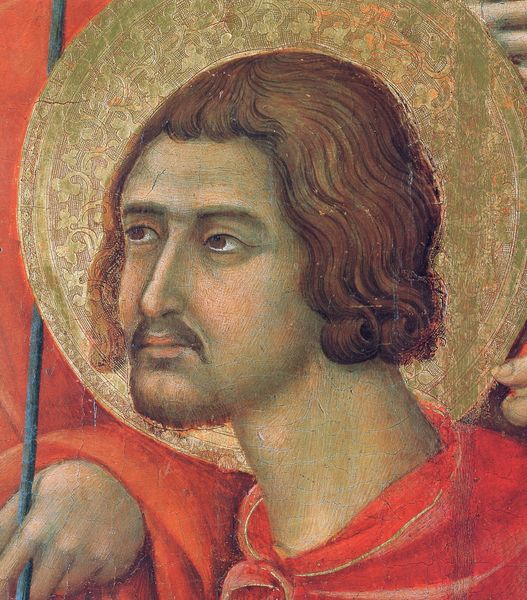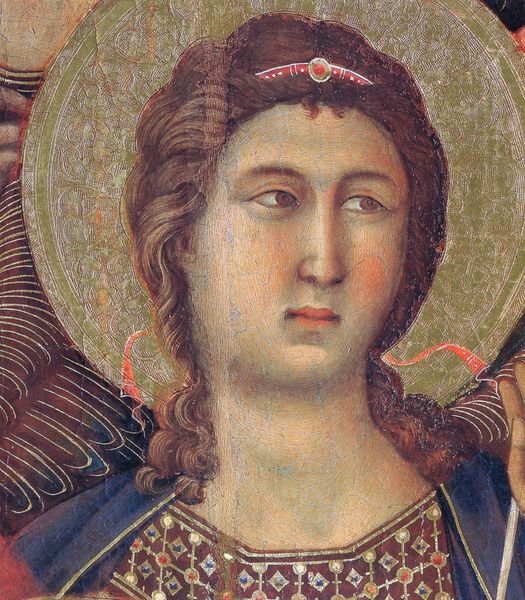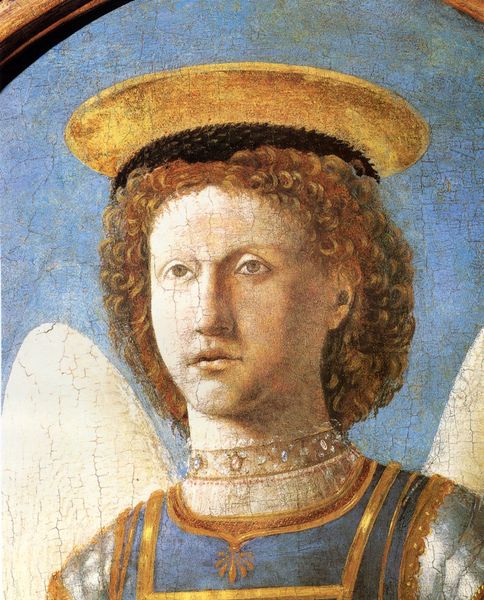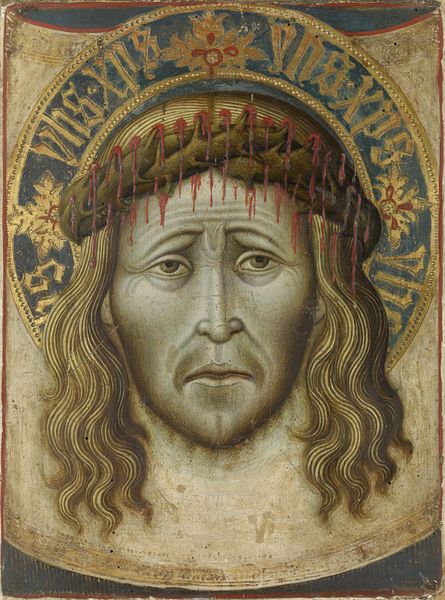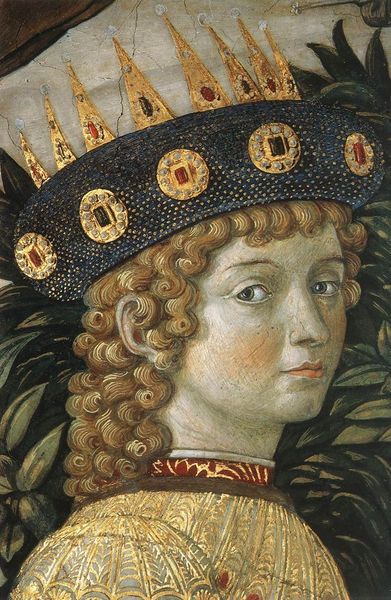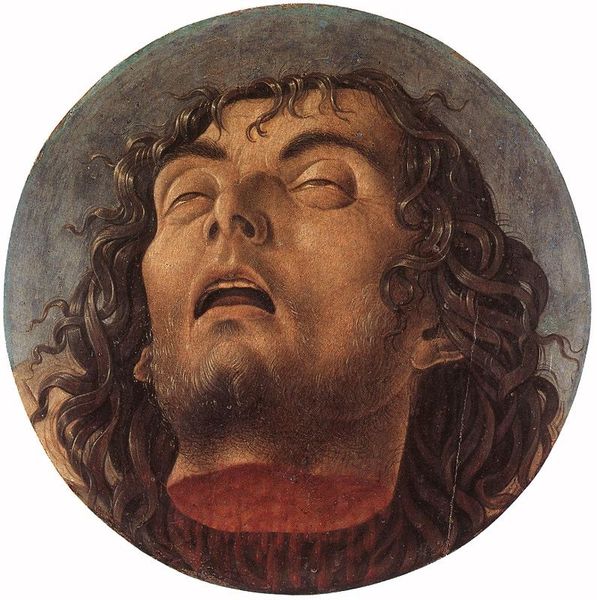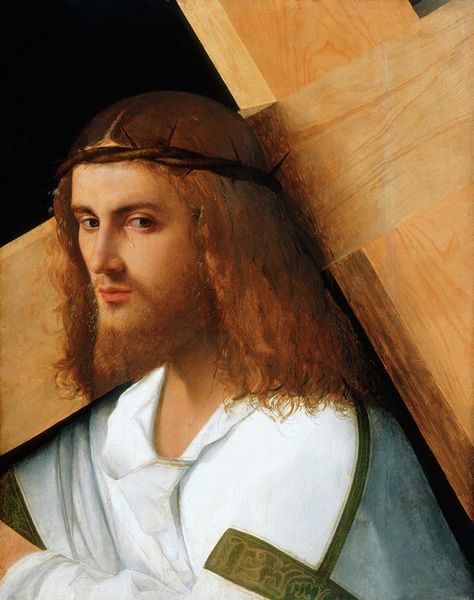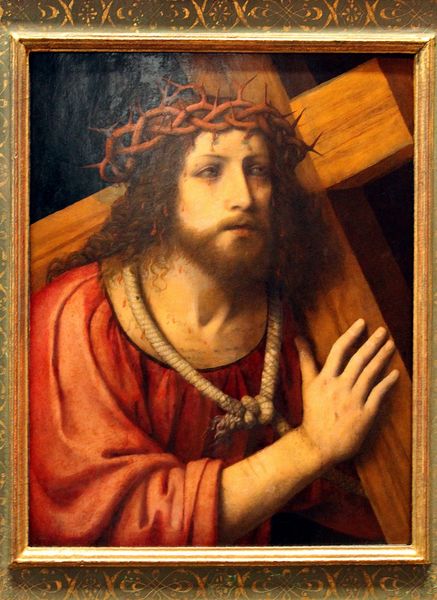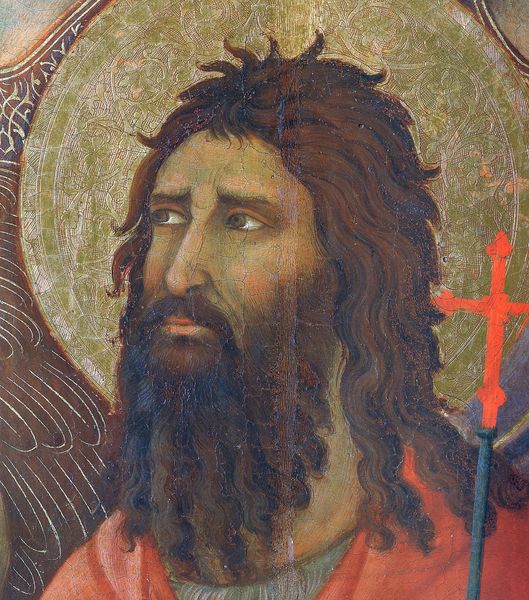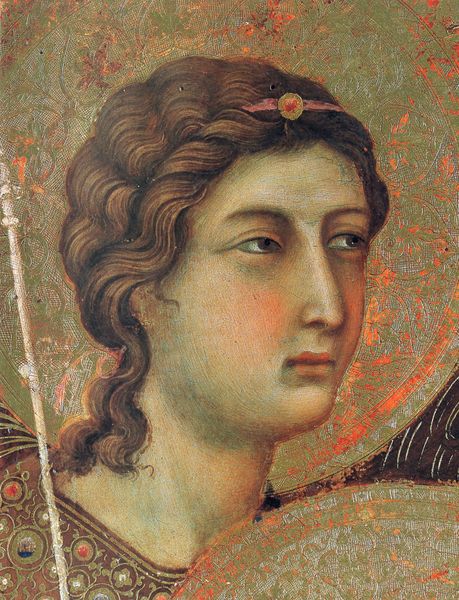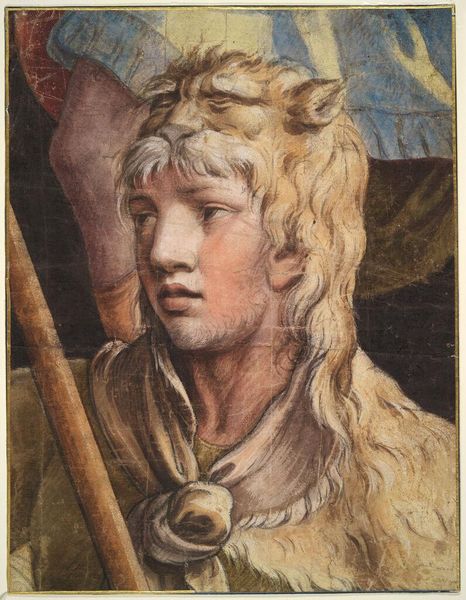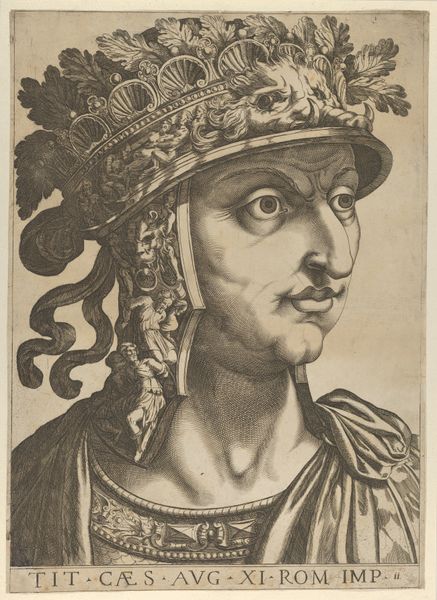
painting, oil-paint
#
portrait
#
painting
#
prophet
#
oil-paint
#
oil painting
#
christianity
#
history-painting
#
italian-renaissance
#
christ
Copyright: Public domain
Curator: Here we have a detail from Pietro Perugino's "The Almighty with Prophets and Sybils," painted around 1500, using oil on, presumably, a wood panel. It is part of a larger work depicting a scene of religious importance. Editor: The luminous quality of the skin and the soft modeling immediately strike me. There's an almost ethereal beauty to this figure. What I notice, formalistically, is how Perugino uses light and shadow to create a sense of volume and depth, despite the relatively flat background. Curator: What's interesting to consider is the workshop practice in that period. Perugino likely had assistants who contributed to sections of the painting, especially in works of this scale. The degree to which each figure's individual features express Perugino's artistic choices versus that of his shop workers invites contemplation regarding value and artisanship. Editor: And yet, the consistency in the application of paint, and the blending of colours here—especially in the face—indicates a guiding hand. This controlled colour palette gives a serene atmosphere, an overriding stylistic choice. How do the materials and their crafting intersect with Renaissance ideas about religious authority and patronage, do you think? Curator: This period of Renaissance painting, marked by its oil paint and its techniques of glazing, speaks of artistic patronage. A king, a religious body, or another noble probably sought to promote its grandeur in ways congruent with social practice. Thus the painting served the requirements of piety alongside political aspiration, even contributing to commerce of devotion. Editor: Certainly. The radiant depiction of the Almighty in turn glorifies earthly power that the painting sought to amplify. So this image does it with a combination of form, the triangular structure that draws the eye upward, and materiality; oil painting lent itself beautifully to that soft glowing effect so prized then and today. The colour of light made real. Curator: Indeed, by examining the choice of medium, how its material application was conceived of, who commissioned it, we see an intertwining of aesthetic form and socio-economic structure. It challenges us to consider value assigned not just to artistic mastery but also the power dynamics that shaped such representations. Editor: Well put. What seems clear is the work embodies more than a representation; it is a testament to a fusion of talent and the spirit that defined Renaissance artistry, with light and grace rendered carefully in paint, and not just any paint, but oil.
Comments
No comments
Be the first to comment and join the conversation on the ultimate creative platform.
